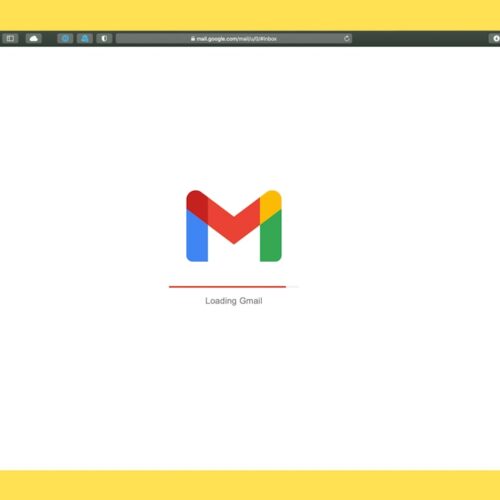Email copywriting is a crucial aspect of any successful sales strategy. It involves crafting persuasive and compelling emails that grab the attention of your target audience, engage them, and ultimately drive them to take action. Whether you’re trying to sell a product, promote a service, or generate leads, effective email copywriting can make all the difference in achieving your sales goals.
In this blog post, we will explore the various elements of email copywriting for sales and provide you with practical tips and strategies to improve your email marketing campaigns. From understanding your target audience to crafting attention-grabbing subject lines, creating compelling email content, using persuasive language and emotional triggers, incorporating social proof and testimonials, optimizing email design and layout, timing your emails for maximum engagement, conducting A/B tests, and analyzing your email campaigns for continuous improvement – we will cover it all.
Key Takeaways
- Email copywriting is an effective way to boost sales and revenue.
- Understanding your target audience is crucial for effective email marketing.
- Crafting attention-grabbing subject lines can increase open rates.
- Compelling email content that uses persuasive language and emotional triggers can drive sales.
- Incorporating social proof and testimonials can increase the credibility of your email copy.
Understanding Your Target Audience for Effective Email Marketing
Before you start writing your sales emails, it’s crucial to have a deep understanding of your target audience. Knowing who your audience is will help you tailor your messaging and content to their specific needs and preferences. Conducting thorough research and creating buyer personas can provide valuable insights into the demographics, interests, pain points, and motivations of your target audience.
To research and understand your audience, start by analyzing your existing customer data. Look for patterns and trends in their behavior, preferences, and purchasing habits. You can also conduct surveys or interviews with your customers to gather more information about their needs and preferences.
Once you have gathered enough data, create buyer personas – fictional representations of your ideal customers. These personas should include details such as age, gender, occupation, interests, challenges, goals, and preferred communication channels. By creating buyer personas, you can better understand the mindset of your target audience and tailor your email copywriting to resonate with them.
Crafting Attention-Grabbing Subject Lines for Higher Open Rates
Subject lines play a crucial role in email marketing as they are the first thing your audience sees when they receive your email. A compelling subject line can grab their attention and entice them to open your email, while a lackluster subject line can lead to your email being ignored or deleted.
To write effective subject lines, keep them concise and to the point. Use action-oriented language and create a sense of urgency or curiosity. Personalization can also be effective in grabbing attention, so consider including the recipient’s name or other personalized details in the subject line.
Here are some examples of attention-grabbing subject lines:
– “Limited Time Offer: Get 50% Off Today Only!”
– “Don’t Miss Out on Our Exclusive Sale – Ends Tomorrow!”
– “Your [Product/Service] Dilemma Solved – Here’s How”
– “Discover the Secret to [Desired Outcome] in Just 5 Minutes”
By crafting attention-grabbing subject lines, you can significantly increase your email open rates and improve the overall effectiveness of your email marketing campaigns.
Creating Compelling Email Content that Converts
While subject lines are important for getting your emails opened, the content of your emails is what will ultimately drive sales. Your email content should be compelling, persuasive, and provide value to your audience. It should clearly communicate the benefits of your product or service and address any objections or concerns they may have.
To write compelling email content, start by clearly defining the purpose of your email. Are you trying to sell a product, promote a new feature, or nurture leads? Once you have a clear goal in mind, structure your email in a way that grabs attention, builds interest, creates desire, and prompts action.
Use storytelling techniques to engage your audience and make an emotional connection. Highlight the benefits and features of your product or service, but also focus on how it can solve their problems or improve their lives. Use persuasive language and include a strong call-to-action that clearly tells your audience what you want them to do next.
Here are some examples of effective email content:
– “Imagine waking up every morning feeling energized and ready to take on the day. Our new energy-boosting supplement can help you achieve just that. With its unique blend of natural ingredients, it provides sustained energy without the crash. Try it today and experience the difference for yourself.”
– “Are you tired of spending hours on manual data entry? Our new software automates the process, saving you time and reducing errors. Say goodbye to tedious data entry and hello to increased productivity. Sign up for a free trial now and see how it can transform your business.”
By creating compelling email content, you can effectively communicate the value of your product or service and drive your audience to take action.
Using Persuasive Language and Emotional Triggers to Drive Sales
Persuasive language and emotional triggers can be powerful tools in email copywriting. By tapping into your audience’s emotions, you can create a stronger connection and motivate them to take action.
To use persuasive language, focus on using words that evoke emotion and create a sense of urgency or excitement. Use strong verbs and adjectives that convey a clear message and make your audience feel something. For example, instead of saying “Our product is good,” say “Our product is amazing!”
Emotional triggers can also be effective in driving sales. Identify the emotions that are most relevant to your audience and incorporate them into your email copy. Whether it’s fear of missing out, desire for success, or the need for security, appeal to these emotions to make your audience more receptive to your message.
Here are some examples of persuasive language and emotional triggers in email copy:
– “Don’t miss out on this once-in-a-lifetime opportunity!”
– “Unlock your full potential and achieve your dreams.”
– “Experience the freedom and peace of mind you’ve been longing for.”
By using persuasive language and emotional triggers, you can create a sense of urgency and desire in your audience, increasing the likelihood of them taking action.
Incorporating Social Proof and Testimonials in Your Email Copy

Social proof and testimonials are powerful tools in email marketing as they provide credibility and build trust with your audience. By showcasing positive reviews, testimonials, or endorsements from satisfied customers, you can demonstrate the value and effectiveness of your product or service.
To incorporate social proof and testimonials in your email copy, start by collecting feedback from your customers. Reach out to satisfied customers and ask them to share their experience with your product or service. Use their testimonials in your emails to highlight the benefits and results they have achieved.
You can also include social proof in the form of statistics or case studies. For example, if you have helped a significant number of customers achieve a specific outcome, mention it in your email to show that your product or service is trusted by many.
Here are some examples of social proof and testimonials in email copy:
– “Over 10,000 satisfied customers have already experienced the benefits of our product. Join them today and see what you’ve been missing out on.”
– “Here’s what our customers are saying about us: [Testimonial]. Don’t just take our word for it – try it for yourself and see the results.”
By incorporating social proof and testimonials in your email copy, you can build trust with your audience and increase their confidence in your product or service.
Optimizing Your Email Design and Layout for Maximum Impact
The design and layout of your emails play a crucial role in capturing your audience’s attention and conveying your message effectively. A well-designed email can make a strong first impression and improve the overall user experience.
To optimize your email design and layout, start by keeping it clean and clutter-free. Use a clear and legible font, and make sure your text is easy to read. Use headings, subheadings, and bullet points to break up the content and make it more scannable.
Include visuals such as images or videos to make your emails more engaging. However, make sure they are relevant to your message and don’t distract from the main content. Use white space strategically to create a sense of balance and guide your audience’s attention to the most important elements of your email.
Here are some examples of effective email design and layout:
– Use a clean and minimalistic design with a clear hierarchy of information.
– Include a visually appealing header or banner that grabs attention.
– Use contrasting colors to highlight important elements such as call-to-action buttons.
– Make sure your email is mobile-friendly and responsive.
By optimizing your email design and layout, you can create a visually appealing and user-friendly experience for your audience, increasing the chances of them engaging with your content and taking action.
Timing Your Emails for Maximum Engagement and Conversions
Timing is crucial in email marketing as it can significantly impact the engagement and conversion rates of your campaigns. Sending your emails at the right time can ensure that they are seen by your audience when they are most likely to be receptive to your message.
To time your emails effectively, consider factors such as time zones, industry norms, and the preferences of your target audience. Analyze your existing customer data to identify patterns in their behavior, such as when they are most active or likely to make a purchase.
Segmenting your email list based on factors such as location, industry, or past behavior can also help you send targeted emails at the right time. For example, if you have customers in different time zones, you can schedule your emails to be sent at a time that is convenient for each segment.
Here are some tips for timing your emails:
– Test different send times and analyze the results to identify the optimal timing for your audience.
– Consider the day of the week and time of day when your audience is most likely to be engaged.
– Take into account any seasonal or industry-specific trends that may affect the timing of your emails.
By timing your emails effectively, you can increase the chances of them being opened, read, and acted upon by your audience.
A/B Testing and Analyzing Your Email Campaigns for Continuous Improvement
A/B testing and analyzing your email campaigns are essential for continuous improvement and optimizing your results. By testing different elements of your emails and analyzing the results, you can identify what works best for your audience and make data-driven decisions to improve your email marketing campaigns.
To conduct A/B tests, start by identifying the specific elements you want to test. This could include subject lines, email content, call-to-action buttons, visuals, or any other element that may impact the performance of your emails. Create two versions of your email with a single variable changed, and send them to different segments of your audience.
Once you have sent out your A/B tests, analyze the results to determine which version performed better. Look at metrics such as open rates, click-through rates, conversion rates, and overall engagement. Use this data to inform future decisions and make improvements to your email copywriting strategy.
Here are some examples of successful A/B tests:
– Testing different subject lines to see which one generates higher open rates.
– Testing different call-to-action buttons to see which one leads to more conversions.
– Testing different visuals or layouts to see which one improves engagement.
By conducting A/B tests and analyzing your email campaigns, you can continuously improve your email copywriting strategy and achieve better results over time.
Best Practices for Email Copywriting to Boost Your Sales and Revenue
In summary, here are the key takeaways from this blog post:
– Understand your target audience and create buyer personas to tailor your messaging and content to their specific needs and preferences.
– Craft attention-grabbing subject lines that entice your audience to open your emails.
– Create compelling email content that clearly communicates the benefits of your product or service and prompts action.
– Use persuasive language and emotional triggers to make a stronger connection with your audience and motivate them to take action.
– Incorporate social proof and testimonials to build trust and credibility with your audience.
– Optimize your email design and layout for a visually appealing and user-friendly experience.
– Time your emails effectively to maximize engagement and conversions.
– Conduct A/B tests and analyze your email campaigns to continuously improve your results.
By implementing these best practices, you can boost your sales and revenue through effective email copywriting.
In conclusion, email copywriting is a powerful tool in sales. By understanding your target audience, crafting attention-grabbing subject lines, creating compelling email content, using persuasive language and emotional triggers, incorporating social proof and testimonials, optimizing email design and layout, timing your emails effectively, conducting A/B tests, and analyzing your email campaigns – you can significantly improve the effectiveness of your email marketing campaigns. So, start implementing these tips and strategies in your own email marketing campaigns today and watch your sales soar.


